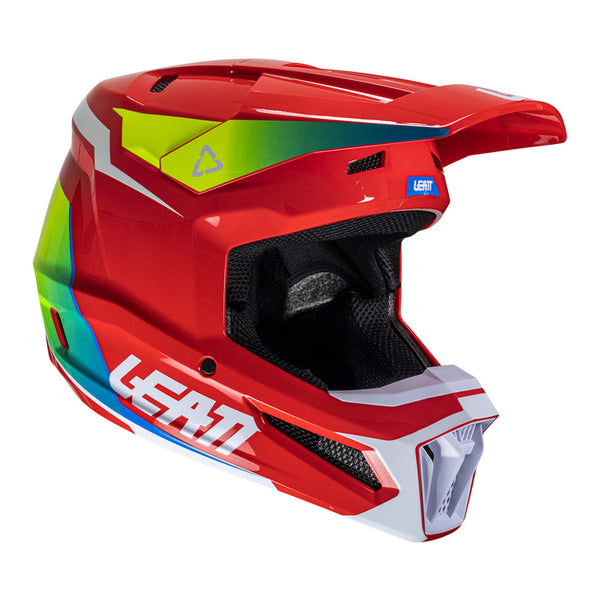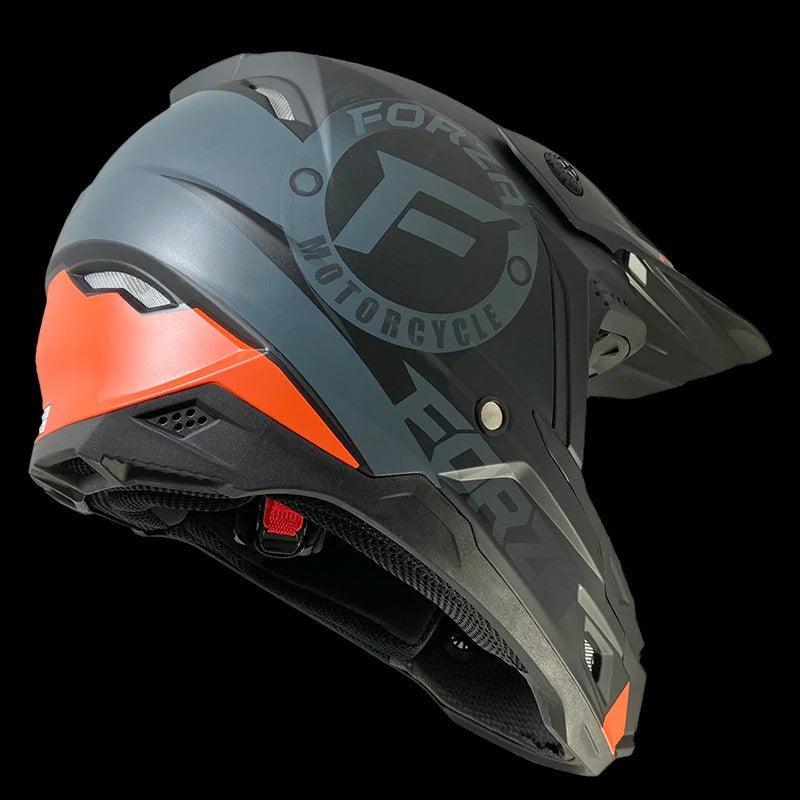Your Guide to Selecting a Light-weight and Resilient Motocross Headgear
Choosing the right motocross helmet is a critical choice that balances safety, efficiency, and convenience. As we explore the details of headgear choice, you might discover that the right mix of attributes can not just elevate your safety but additionally transform your time on the track.
Importance of Headgear Weight
The weight of a motocross safety helmet plays an important duty in both rider comfort and efficiency. A lighter safety helmet can substantially improve a motorcyclist's experience, reducing exhaustion throughout long adventures or races.
In enhancement to convenience, the weight of the headgear can influence the rules of aerodynamics. A lighter headgear minimizes wind resistance, allowing bikers to maneuver much more efficiently at high rates. This aspect comes to be significantly crucial in affordable setups where every second counts. Lightweight materials made use of in safety helmet construction, such as sophisticated compounds and polycarbonate blends, typically supply exceptional protection without sacrificing comfort.
It is likewise worth keeping in mind that the equilibrium of the helmet plays a crucial function in total stability. A healthy helmet disperses weight uniformly, enhancing the rider's ability to preserve a reduced center of mass and implement doglegs. In recap, helmet weight is a crucial consideration for motocross cyclists, influencing both comfort and efficiency on the track.
Trick Safety And Security Functions
Considering that the key function of a motocross headgear is to shield the motorcyclist, recognizing key security features is essential for making an informed choice. Among the most vital aspects of headgear safety and security is the impact absorption ability, which is usually achieved with an increased polystyrene (EPS) foam liner. This foam compresses upon influence, minimizing the force sent to the head.
Another vital safety feature is the helmet's retention system, which includes the chin strap and fastening. A protected retention system guarantees that the helmet remains in position throughout a collision, dramatically improving defense. Additionally, many safety helmets come geared up with MIPS (Multi-directional Impact Security System) innovation, created to reduce rotational pressures during tilted impacts, thus lessening the risk of brain injuries.
Ventilation is likewise a safety factor to consider; while it mainly deals with convenience, correct air movement can prevent heat-related tiredness, which can impair a rider's efficiency and response time. Guarantee that the helmet satisfies security qualifications like DOT, ECE, or Snell, as these requirements suggest that the helmet has gone through rigorous testing to ensure its protective capacities. Focusing on these key safety features can improve your riding experience while protecting your wellness.
Materials and Construction
Choosing a motocross safety helmet includes not just considering safety features yet additionally understanding the products and construction that add to general efficiency and defense. The primary product used in helmet building is polycarbonate or fiberglass, both of which use a desirable equilibrium in between weight and longevity. Polycarbonate helmets are commonly lighter and a lot more inexpensive, while fiberglass options give improved toughness and influence resistance.
The covering building plays a crucial function in energy dispersion throughout impacts. Multi-layer styles, frequently making use of a mix of materials, can successfully soak up and dissipate forces, reducing the danger of head injuries. Some high-end models integrate carbon fiber, which considerably lowers weight without endangering architectural stability.
Internally, the headgear's cellular lining is generally made from expanded polystyrene (EPS), which is designed to soak up shock. Modern safety helmets might include multiple density EPS, maximizing power absorption throughout a variety of impact scenarios. In addition, advanced air flow systems are incorporated into the layout to enhance air movement, maintaining the motorcyclist cool throughout extreme rides.

Fit and Comfort
Attaining the appropriate fit is crucial for a motocross headgear, as it straight influences both safety this contact form and security and comfort during experiences. A well-fitted headgear decreases movement and minimizes the danger of injury in the event of a crash.
When trying out a safety helmet, it is important to inspect for a tight yet comfortable feeling. The safety helmet should not develop pressure points, yet it ought to also not be loose sufficient to move during motion. A good test is to move the helmet side to side and backwards and forwards; it should remain in area without too much activity. Furthermore, the cushioning must adjust to the shape of the head over time, offering convenience on longer trips.
Ventilation is one more key facet of fit and convenience. Appropriate air movement can considerably enhance biker experience by reducing warmth accumulation. Ultimately, investing time in discovering the best dimension and fit will certainly add to a much safer, more satisfying motocross experience.

Spending Plan Factors To Consider
When purchasing a motocross headgear, cyclists should very carefully assess their budget plan to ensure they find a top quality product that fulfills security requirements without overspending. Setting a spending plan is vital, as costs for headgears can differ substantially based upon features, products, and brand site name credibility.
On the reduced end, helmets might start around $100; nonetheless, motorcyclists must beware, as these models might endanger on safety and security or comfort. Mid-range safety helmets, normally valued between $200 and $400, commonly supply an equilibrium of toughness, convenience, and progressed safety functions, making them a popular choice amongst major motorcyclists.
Costs headgears, valued above $400, typically include advanced materials such as carbon fiber and extensive air flow systems, supplying exceptional security and comfort. While purchasing a high-end headgear can boost the riding experience, it is vital to guarantee that the additional features align with individual riding needs.

Final Thought
In summary, selecting a long lasting and lightweight motocross helmet is important for guaranteeing biker safety and security and comfort. The relevance of helmet weight, integrated with crucial safety and security functions such as EPS foam linings and MIPS innovation, can not be overstated.
Choosing the appropriate motocross safety helmet is an essential choice that balances comfort, safety and security, and efficiency.Considering that the primary function of a motocross headgear is to safeguard the cyclist, comprehending key safety functions is vital for making an enlightened selection. Make certain that the headgear fulfills safety qualifications like DOT, ECE, or Snell, as these criteria suggest that the helmet has actually undergone strenuous screening to guarantee its safety capacities.Accomplishing the ideal fit is essential for a motocross safety helmet, as it straight influences both safety and security and comfort during trips.In recap, choosing a resilient and lightweight motocross helmet is essential home for making certain biker safety and convenience.